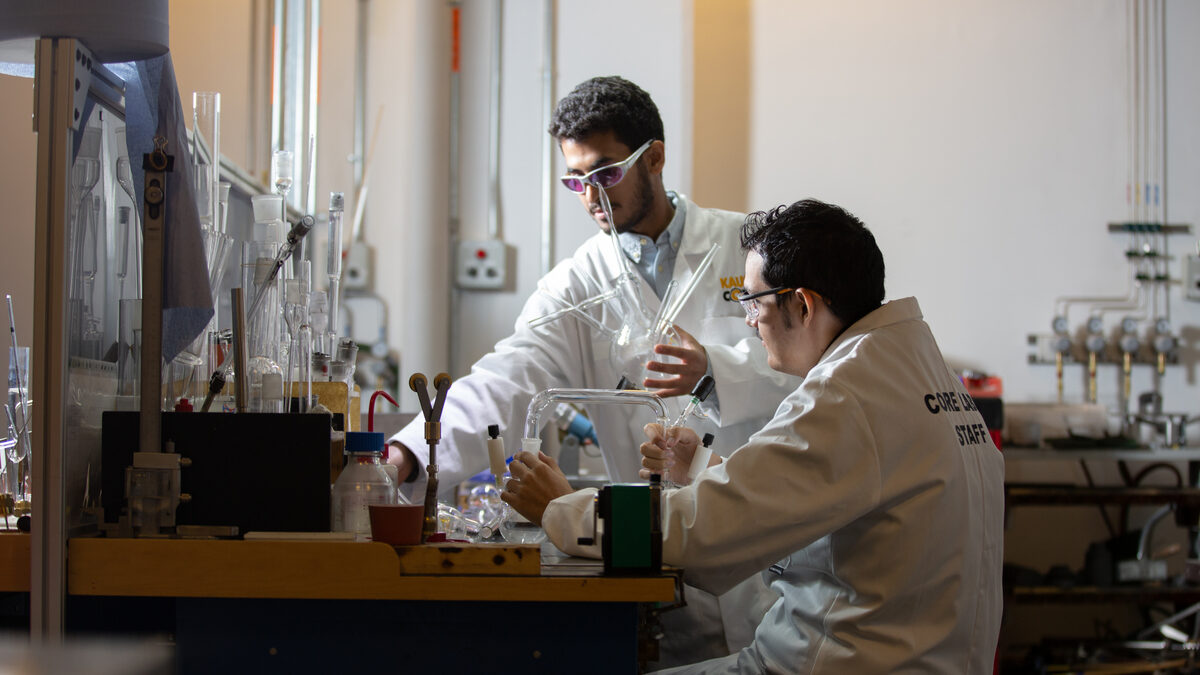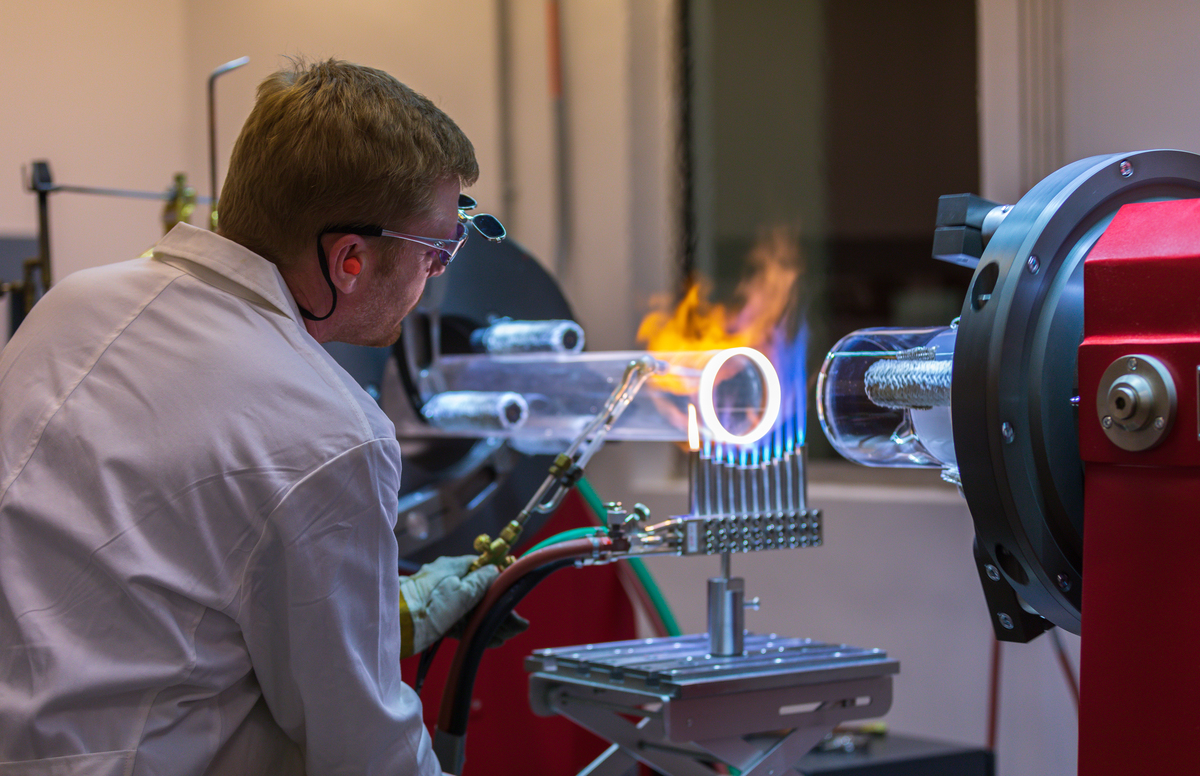Glass equipment is vital to most areas of science at KAUST, and now a new generation of glassblowers will be trained through the university’s central lab glassblower apprenticeship program, the first of its kind in Saudi Arabia.
Fasil Nour and Mohammed Al-Amri, the first two apprentices in the program, began training in 2020, virtually in June and then on campus in October, with master glassblowers Ernest Neil Davison and Emilio Harin.
Both from Saudi Arabia, the pair will learn their delicate yet challenging craft — along with a lot of patience — over about 7,000 hours or five years of training and mentoring before they will graduate as glass journeymen. It will take them a further five years to become master glassblowers.

© 2021 Khulud Muath
As well as learning about the many types of glass and the different techniques for working and manipulating it, the pair will develop a diverse range of skills for designing, fabricating and repairing bespoke scientific glassware for KAUST researchers and their research and industry partners.
The glassware they will make could range from giant distillation apparatus to something tiny, even nanoscale. The program, developed by Davison with LaVon Bennet, will bring in a new cohort of apprentices every two years and aims to produce graduates that will help build a niche industry for Saudi Arabia in providing scientific glassware for national universities and industries.
New lab manager Jason Serin has plans to expand the facility and introduce a new basic glass blowing class for students to enable them to undertake simple glass blowing tasks in their own labs.

